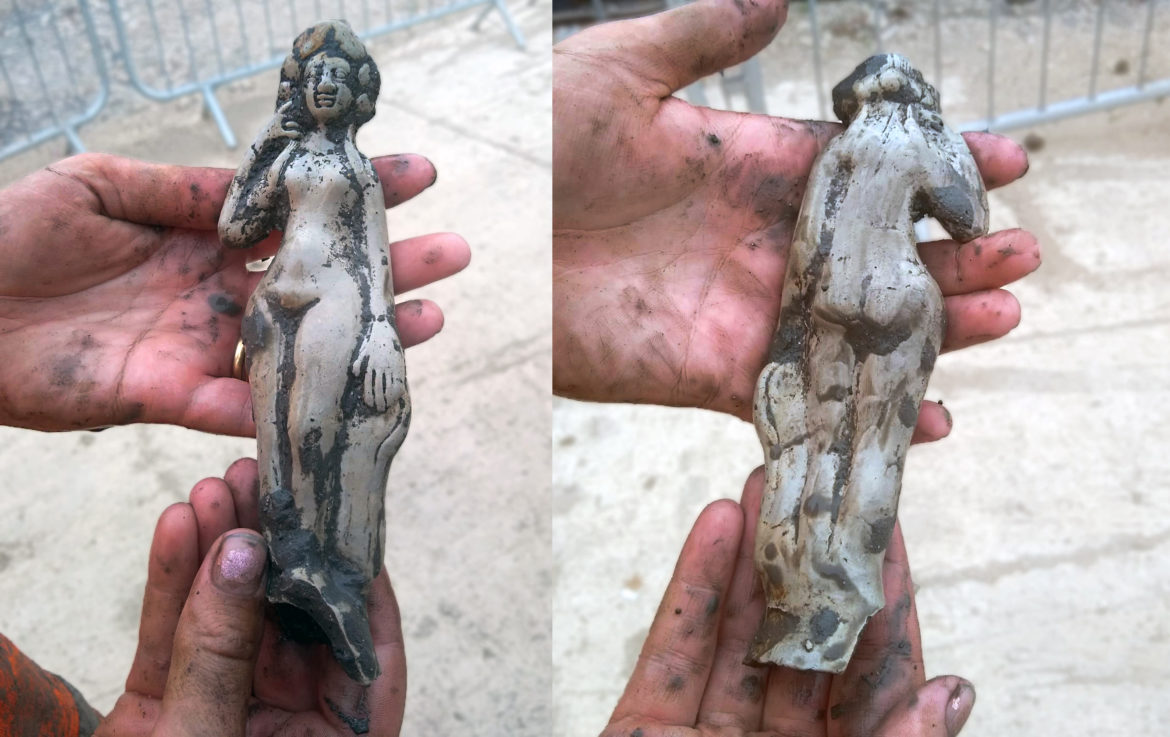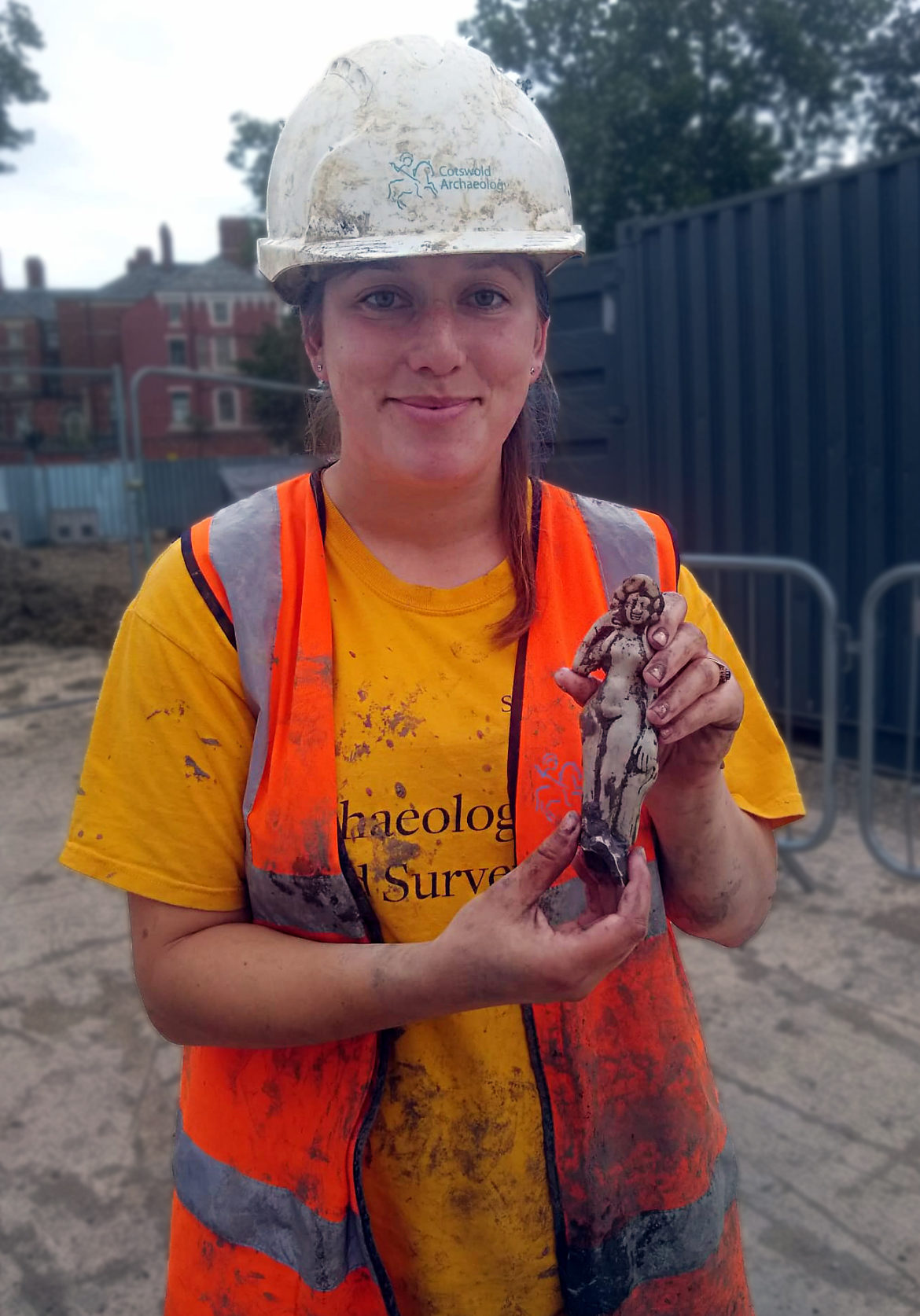GLOUCESTERSHIRE, England – A Roman-era statue of the Venus was unearthed as developers prepared a site for a new $145 million, multi-use commercial construction project called, appropriately enough, The Forum.
Venus is venerated in Religio Romana and other faiths as the goddess of love, beauty, sex, fertility, prosperity and victory. Venus is the progenitor of the Roman people through her son, the Trojan hero, Aeneas, himself the ancestor of Romulus and Remus. The story is told in Virgil’s epic poem the Aeneid.

Image credit: Cristoforo Majorana – Walters Art Museum, Public Domain
The Roman Empire entered Britain on 43 C.E. when Emperor Claudius ordered an invasion of what is today, England. The invasion was led by Aulus Plautius and Rome quickly dominated the region. Resistance followed a brief 10-year period, led by Boudica. By 80 C.E., Rome was in control of much of the area and Emperor Hadrian built his eponymous wall in 122 C.E.
Claudius’ invasion of Britain followed two previous incursions in 55 and 54 B.C.E. led by Julius Caesar who claimed to be a descendent of Venus.

Venus Statue via Cotswold Archaeology [via Twitter]
In 48 C.E., Roman legions secured the area of modern Gloucestershire and established the Roman fortification Colonia Nervia Glevensium, often called simply Glevum. The addition of the word “Colonia” was likely added about 97 C.E. as a retirement settlement for legionnaires.
The Gloucester and District Archeological Research Group wrote that there may have also been a Celtic settlement called “Caer Glow” or “Caerloyw,” translated as “bright fortress.”
They noted that “Roman Britain was divided into four provinces in the early 4th century. It is most likely that Glevum, as a colony, became the provincial capital of Britannia Secunda, in the same way that colonies at York and Lincoln became capitals of their respective provinces. There is some evidence that at this time Glevum possessed a mint.”
Glevum, along with much of Romano-British culture, declined in the 4th century C.E. until the removal of the Roman military in 407 C.E.
Archeologist Anthony Beechey told the BBC, “This has been the most exciting find of my career in archaeology so far,” adding that the “figurine provides an important tangible link between the people of Gloucester and their past.”
The seven-inch Venus figurine is made of a type of white clay found in the Rhine river in modern Germany, and the Meuse river in modern France, Belgium, and the Netherlands that is commonly called pipeclay. The figurine has been dated to about 200 C.E. suggesting it was owned by a resident of Glevum. Dani Hurst of Cotswold Archeology discovered the Venus statue in September, and it has survived 1,800 years extremely well despite being covered in mud and found in what may have been a Roman trash dump. Only the base of the statue is missing.
“This figurine is in incredibly good condition and a wonderful find for Gloucester,” city archaeologist Andrew Armstrong tells BBC News. The team has also identified several stone foundations that may be a suburb of Glevum. However, the archeological team also discovered what appear to be the remains of a Carmelite Friary known to have existed in the area from the 14th – 16th century C.E. Work will continue to identify the structures and sort the findings.

Dani Hurst holding Venus Statue via Cotswold Archaeology [via Twitter]
“We know pieces like these were made in central France and the Rhineland/Mosel region of Germany during the first and second centuries [C.E.],” Armstrong added. “It seems certain the figurine is from this period and is a representation of Venus. She would most likely have stood in someone’s home shrine for the goddess.”
Armstrong told Gloucester Live, “It was beyond my wildest hopes. We are really looking forward to what else we can learn about Roman suburban living.”
The Project Officer at Cotswold Archaeology and Lead Archaeologist of the dig, Marino Cardelli, described the find as extraordinary. “The Forum site features treasures of inestimable historical value, buried structures and artefacts; a testimony of the city’s history and culture,” he said.
The Wild Hunt is not responsible for links to external content.
To join a conversation on this post:
Visit our The Wild Hunt subreddit! Point your favorite browser to https://www.reddit.com/r/The_Wild_Hunt_News/, then click “JOIN”. Make sure to click the bell, too, to be notified of new articles posted to our subreddit.
